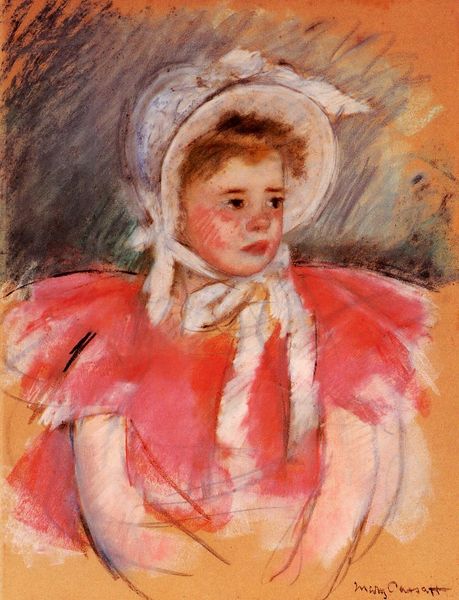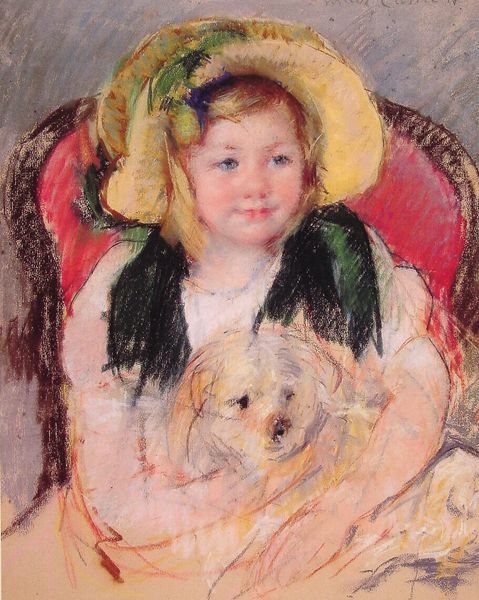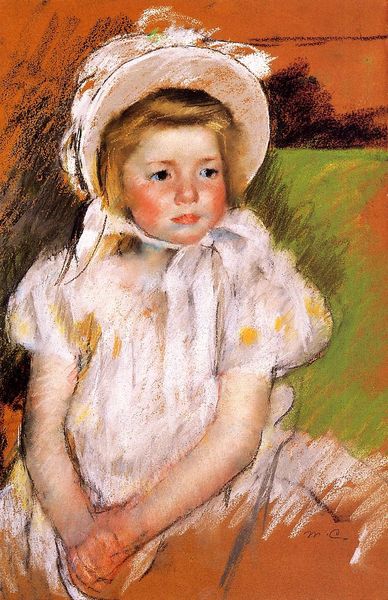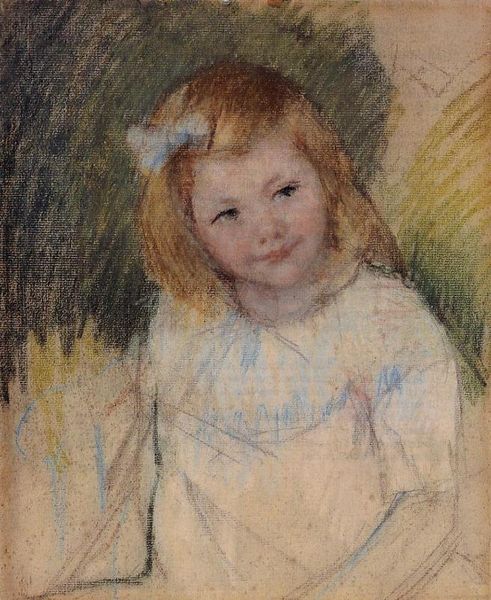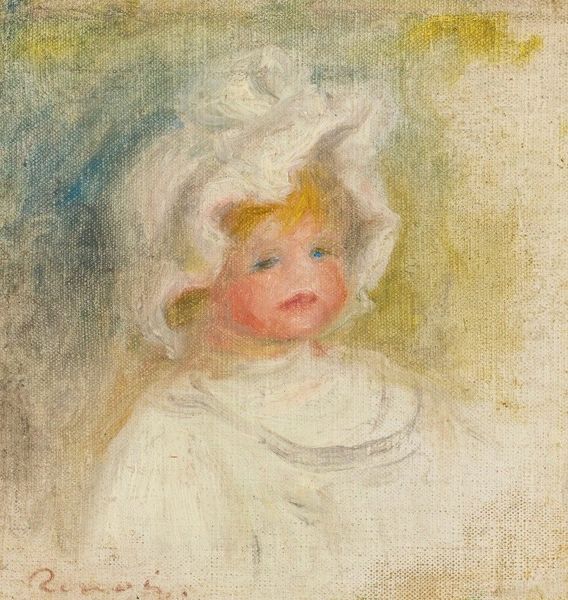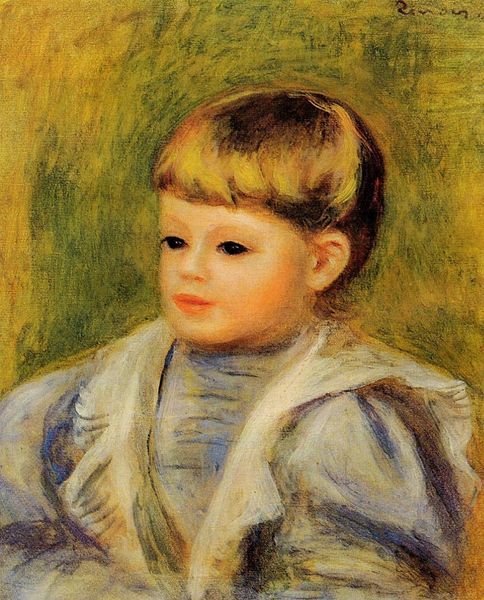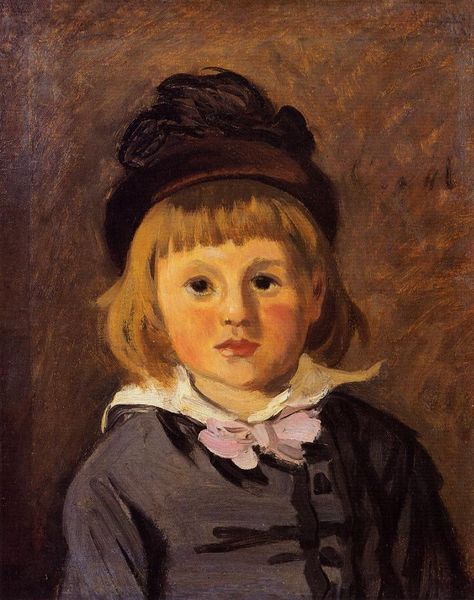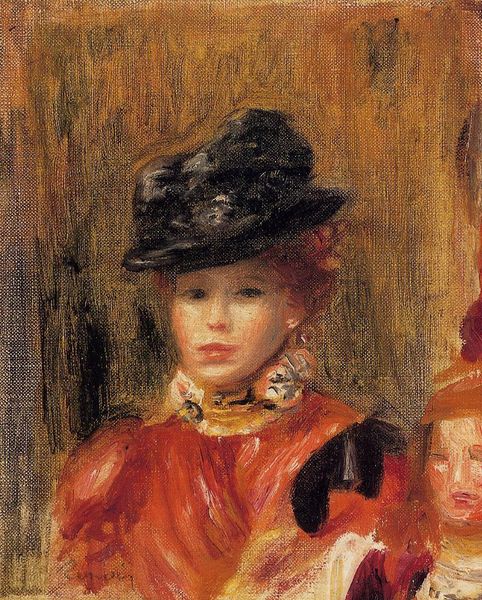
Copyright: Public domain
Curator: It strikes me first as something I would have found in my great aunt's parlor – all soft hues and dreamy regard. The bonnet seems impossibly large, like a cumulus cloud framing her face. Editor: You've keyed right into it, I think. This is "Dorothy in a Very Large Bonnet and a Dark Coat," a pastel created by Mary Cassatt around 1904. Cassatt, of course, was one of the few American artists to exhibit with the Impressionists in Paris. Curator: Pastel—that explains the light touch! So different from the solidity of, say, a Sargent portrait. But there’s something more than just delicacy in this Dorothy; it feels like a fleeting glimpse of childhood innocence. Perhaps something lost, already. Editor: Yes, that tension is vital. Cassatt found critical success, particularly within avant-garde circles, in her depictions of women, especially mothers and children. However, these images aren't saccharine. They reflect the social position of women and girls at the turn of the century, often portrayed with a direct gaze. Dorothy here doesn't exactly beam at us, does she? Curator: No, not at all. It is like Dorothy’s caught somewhere between worlds, with that oversized bonnet. It is as if childhood is already too cumbersome, ready to be shed like an outgrown skin. The muted greens and blues surrounding her enhance the somber feeling. It isn't sentimental, and you can feel how astute Cassatt was in avoiding all such traps of prettiness. Editor: Absolutely, Cassatt often depicted girls and women outside conventional social constraints while understanding the social mores that surrounded her. One interesting aspect is that even though Cassatt presented this work to a private collection she also ensured her paintings and prints reached a wider audience through exhibitions and publications. She navigated both worlds. Curator: That is remarkable, isn't it? This is a piece that hums with quiet contradictions. The simplicity and sophistication playing side-by-side makes this artwork linger long after we’ve turned away from it. Editor: It leaves you pondering childhood’s fleeting nature. Considering that so many artists did similar art at the time, Cassat really brought to bear her deep personal perspective that separated her from the many imitators that were produced at the time.
Comments
No comments
Be the first to comment and join the conversation on the ultimate creative platform.


